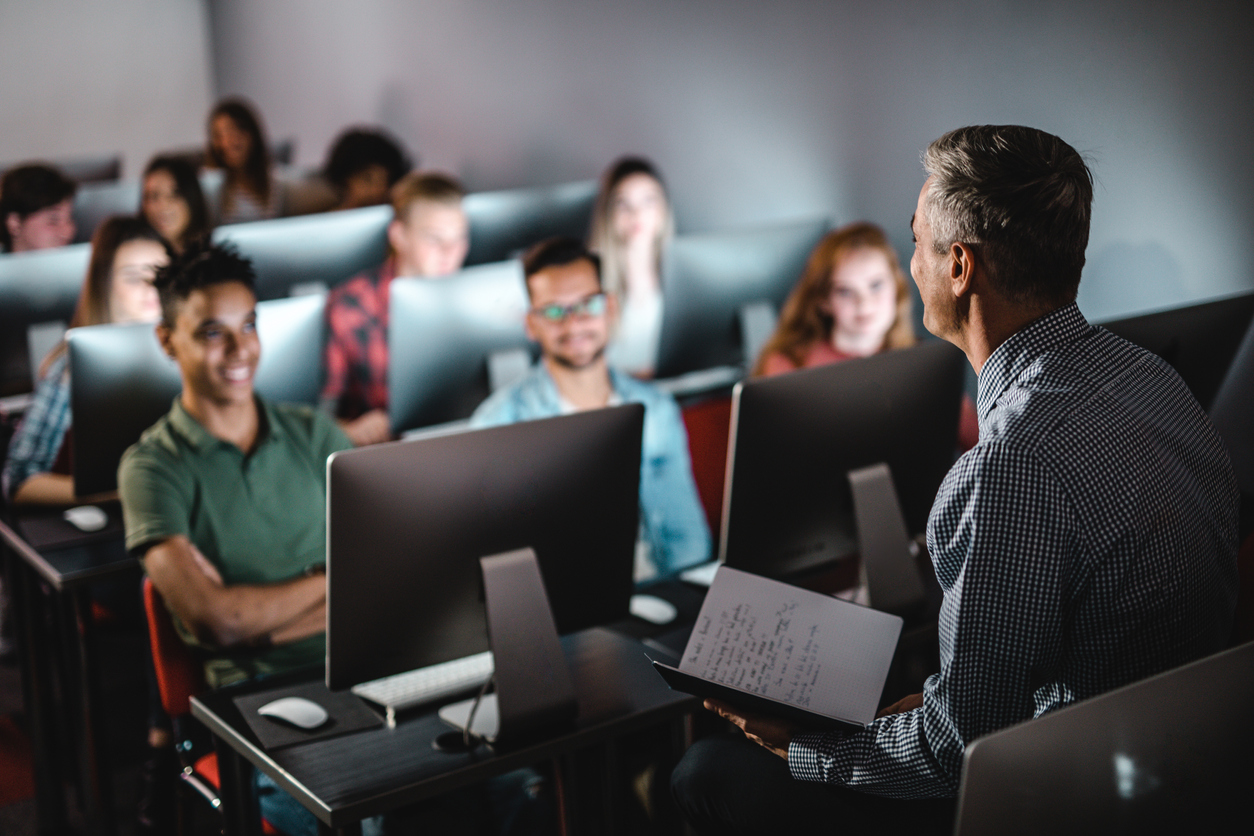AI Commission Pushes for Digital Workforce Reform
The group advocated for a U.S. Digital Services Academy and National Reserve Digital Corps.

Fostering and building on digital education and workforce growth are some of the most essential recommendations for advancing artificial intelligence, the National Security Commission on Artificial Intelligence told lawmakers during a House hearing last week.
The commission advocated for five key areas including AI research and development expansions, Defense Department organization reforms to overcome challenges impeding AI adoption, a microelectronics national strategy, AI ethics guidelines and workforce reforms.
Of all these five areas, the committee argued that reforming workforce skilling and technological training are some of the most critical efforts on which Congress needs to act soon.
NSCAI more specifically made two key recommendations to cultivate a robust and improved digital and AI-ready workforce in the federal government beyond the resources of preexisting federally backed programs — to build a digital service academy and to establish a national reserve digital corps.
“We propose building a United States Digital Service Academy,” NSCAI Commissioner Mignon Clyburn said. “The academy would be a partnership between public and private sectors working together toward a common goal of developing a modern, digitally proficient workforce.”
As an independent entity, the proposed academy would produce “technically educated graduates who would have a service obligation as civil servants in the federal government,” Clyburn said.
Clyburn added that a National Reserve Digital Corps would be modeled after the military reserves, enabling civilian digital and IT professionals to work for the government 38 days a year as advisors, instructors and developers. This, she argued, is a critical way of providing a pathways for preexisting technological expertise that currently concentrates in the private sector the opportunity to aid in key federal digital and AI-oriented growth.
With the program modeled after the university-based Reserve Officers’ Training Corps (ROTC), “we could incentivize participation with a training and education fund and a scholarship program,” Clyburn said. “While short-term volunteers are not a substitute for full-time employees, they can help improve AI education for both technologists and non-technical leaders, perform data triage and acquisition, help guide projects and frame technical solutions, build bridges between the public and private sector and other important tasks.”
NSCAI Chair Eric Schmidt backed the importance of cross-pollination between government and industry workforce and technological efforts to drive the future of U.S. dominance in emerging technologies — not only in AI, but also in biotechnology, semiconductors, 5G networking, advanced manufacturing and quantum computing.
“The fact that talent and knowledge is in the private sector, we need it in the federal government, and we need the federal government people in the private sector. We need to make that as easy as possible,” Schmidt said.
While these two recommendations bring in new digital talent to the government, either through short-term annual assistance or new educational pipelines, Clyburn suggested ways federal organizations can reorganize their internal workforce structure and reskilling efforts to encourage aptitude in AI.
“The government should focus on five things,” she said, with those being: building a technical workforce with tiered levels of skill, educate senior leaders, train junior leaders, train the end users and train those in critical support roles like human resources and acquisition.
Commission Vice Chair Robert Work also emphasized that further funding and support for research will help the U.S. remain competitive and ahead in AI development.
“We want to emphasize the importance of creating a national AI research resource,” Work said. “Right now we have an AI research ‘haves’ and ‘have-nots’; The haves are generally in the private sector and the have-nots are in academia. We’re very encouraged with the new recent White House-led investments to establish seven national AI institutes. But we believe that the AI Research Resource will complement and support these efforts in terms of Department of Defense organization reform.”
The House committee has been applying some of the NSCAI’s ideas and priorities from earlier interim reports this year in the National Defense Authorization Act for the upcoming fiscal year. The commission plans to deliver its final full report to Congress and the White House in March 2021.
This is a carousel with manually rotating slides. Use Next and Previous buttons to navigate or jump to a slide with the slide dots
-

Forging Successful Cloud Modernization Partnerships
Industry leaders share insights on the critical role industry partnerships have in enabling government agencies to navigate procurement challenges for cloud and zero trust solutions.
24m watch Partner Content -

CISA's CVE Program and Why it Matters for Zero Trust
The vulnerability program provides the cybersecurity community visibility into software as part of a key pillar of CISA's zero trust model.
5m read -

DOD's Tech Advantage Hinges on Commercial Collaboration, Says DIU Director
Seamless public-private sector integration is crucial for national security to compete with global powers, DIU Director Doug Beck said.
4m read -

Human-AI Collaboration is Key to Secure Government Systems
Former CIA security chief emphasizes training and international standards for effective AI implementation.
23m watch




